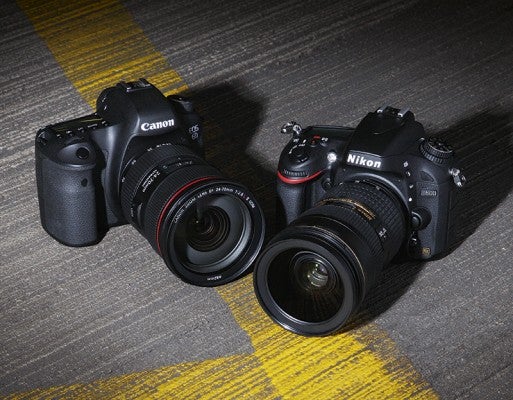Canon EOS 6D vs. Nikon D600 ? Features
Let’s start by looking at their main selling point – their full frame sensors. The Canon EOS 6D features a 20.2MP chip, while the Nikon D600 offers a slightly higher resolution at 24.3MP. In the real world, this equates to a non-interpolated 240ppi file at 16.7 x 25in compared to 15.2 x 22.8in from the Canon EOS 6D, while the file size is roughly 69.1MB for the D600 compared to 57.1MB for the Canon 6D.
The Canon EOS 6D edges out the D600 when it comes to its sensitivity range, offering a standard ISO range from 100-25,600, that can be expanded to an ISO equivalent of 50-102,400. This compares to a standard ISO range of 100-6400 for the Nikon D600, with the ability to expand this to an ISO equivalent of 50-25,600. While it’s not necessarily going to be used frequently, the extra two stops that the Canon EOS 6D provides adds that bit of versatility when required.
One of the most noticeable differences though is the AF. Whereas the Canon 6D has a very modest (some could say stingy) 11 AF points, the D600 features a much more generous and pro-like 39 AF-point arrangement. Not only that, but while the D600 has the luxury of nine of the AF points being the more sensitive cross-type variants, the 6D makes do with a single cross-type point at the centre – even the Canon EOS 650D features nine cross-type AF points, so it’s disappointing to see just the one cross-type point in the Canon EOS 6D.
The rear screens differ slightly, with the Nikon D600 featuring a 3.2in screen with a 921k-dot resolution, whereas the Canon 6D features a 3in screen, but with a 3:2 aspect ratio display that’s more suited to the dimensions of the sensor and a higher 1,040k-dot resolution. The Nikon D600 does gain some ground back with the viewfinder.
Both have large and bright optical viewfinders – anyone upgrading from an APS-C DSLR will notice the difference immediately – but the D600 provides 100% coverage as opposed to 97% with the Canon 6D. This 3% may seem insignificant, but you’ll be surprised what can creep into the edge of the frame when composing your shot.
The Nikon D600 also boasts a useful built-in flash that’s handy for fill-in and can be set-up to control multiple Speedlights for off-camera flash techniques, while it also has the slightly faster flash sync speed.
Both DSLRs feature Wi-fi connectivity. The Canon EOS 6D has a built-in system; the D600 requires the £65 WU-1b Mobile Adapter. Both offer apps to let you control the camera remotely, even providing a live view feed to your mobile, and images can be transferred wirelessly between the camera and other devices.





